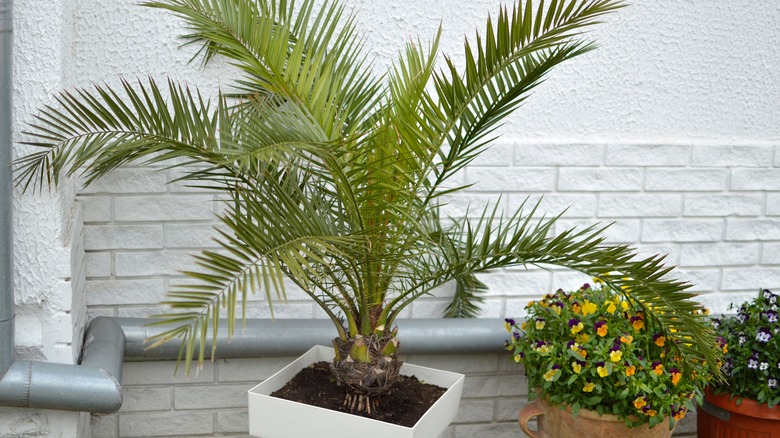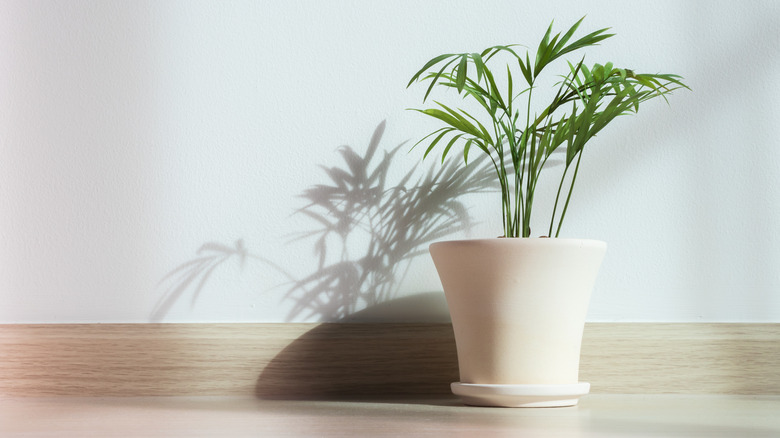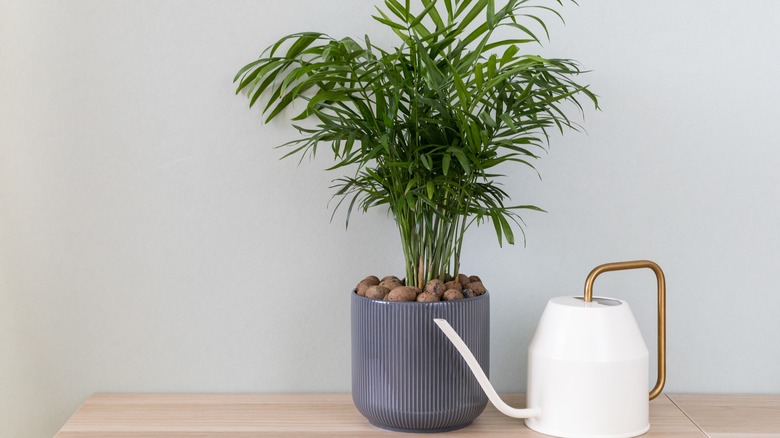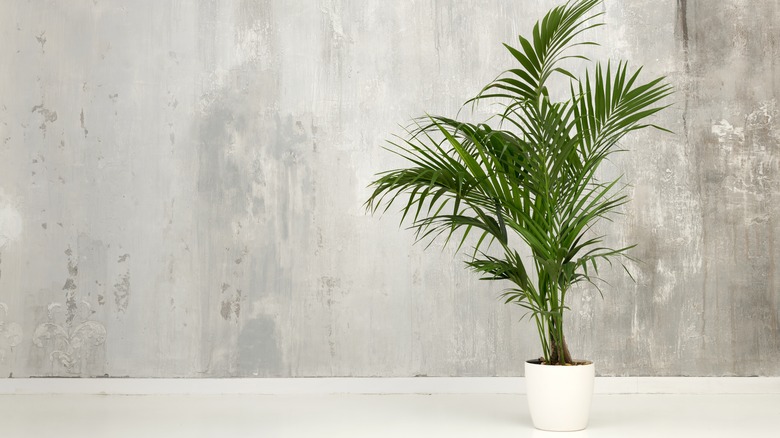3 Plants That Are Equally Beautiful But Easier To Grow Than The Popular Majesty Palm
If you're on a mission to transform your bathroom into a tropical oasis or add more greenery to your home, you might have considered investing in a majesty palm. Native to Madagascar, this plant features expansive palm leaves with wispy fronds sprouting from the trunk and deep green coloration, allowing you to bring the water-side vibes indoors. It's no wonder it is well-beloved, reaching up to 10 feet tall when grown inside and as much as 90 feet in its natural habitat. While you're not likely to see a majesty palm produce fruits and flowers indoors, they are known to do so when thriving in tropical outdoor conditions. Though the palm tree boasts stunning attributes, it is unfortunately known to be quite hard to care for.
Majesty palms require significant maintenance and can be incredibly challenging for newer gardeners. Many houseplants are flexible in their care needs and able to adapt to conditions that may be less than ideal, but the majesty palm is not one of them. These trees require a delicate balance of many elements, including light, warmth, humidity, fertilizer, and water. If its needs are not adequately met, you'll quickly find your palm tree deteriorating. Fortunately, there are lower-maintenance alternatives to the majesty palm. The bamboo, parlor, and Kentia palms are much easier to tend to and will still turn your space into a charming paradise.
Bamboo palms
Bamboo palms, or Chamaedorea seifrizii, belong to the Araceae family and are not to be confused with natural bamboo plants in the Poaceae family. However, they received their name from their resemblance to bamboo and are often called reed and cane palms. You can expect to see a bamboo palm grow between 3 to 20 feet and live more than 10 years when grown inside. In addition to being low maintenance, these palm trees are great for purging toxic chemicals like carbon monoxide, benzene, and formaldehyde from the air and are not harmful to pets, per the American Society for the Prevention of Cruelty to Animals (ASPCA).
While most palm varieties need bright sun due to their tropical nature, the bamboo palm is quite happy in low indirect light. The Central American native palm prefers comfortable 65 to 80 degrees Fahrenheit conditions but tolerates colder temperatures when unavoidable. Ideally, you'll want to gradually move them away from doors and windows when cold weather approaches. Bamboo palms can grow inside and out without the outside needing to meet a hardiness requirement of 10-11 for successful growth. All of these factors make them ideal houseplants.
Parlor palms
Parlor palms are another plant in the Arecaceae family, also sporting the names Neanthe Bella parlor palm and Chamaedorea elegans. This smaller palm plant is native to rainforest regions in Mexico and Guatemala, not usually exceeding 4 feet in height when inside, and it grows its leaves on single stems rather than from the trunk like most palm trees. The parlor variety is known for its hardy nature, making it the perfect plant for an indoor tropical paradise. It is often a go-to plant for public establishments because of its adaptability to lower temperatures and light.
Although it can grow well enough in less-than-ideal conditions, parlor palms grow best in temperatures of 65 to 75 degrees Fahrenheit and acidic to neutral potting mixes. It likes moderate watering with the top inch of soil drying out in between but not getting so dry that it lacks needed moisture. Parlor palms also take their time growing, taking five to 10 years to mature fully. Still, their smaller size makes their location more flexible, whether on tables, windowsills, or countertops. Like other palms, the parlor helps remove toxins from the air, and the ASPCA states that they are not toxic to our furry friends.
Kentia palm
The Kentia palm also called the paradise palm, sentry palm, thatch leaf plam, and Howea forsteriana, is a highly resilient tree variety. Well-loved for withstanding ill-suited conditions, the Kentia is native to Australia's Lord Howe Island. They grow well inside and outside, with outside hardiness zones of 9 to 11 ideal. When grown outdoors, you can expect a Kentia palm to reach a max height of 40 feet and 12 feet indoors.
Like many other potted palm tree varieties grown indoors, it matures slowly and sprouts its leaves from a single trunk. While Kentias can survive in temperatures as low as 25 degrees Fahrenheit and as high as 100, it is most comfortable at 55 and above. Lighting-wise, it tolerates low sun, but it prefers bright indirect light or partial shade. The Kentia palm will gladly grow in different kinds of soil, whether acidic, alkaline, or loamy, but a sandy aerated option will be most suitable. It is excellent for air purification, and the ASPCA lists this palm tree as another that won't harm your pets, so you won't need to think twice about adding it to your space.



